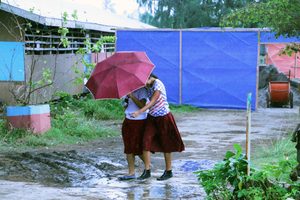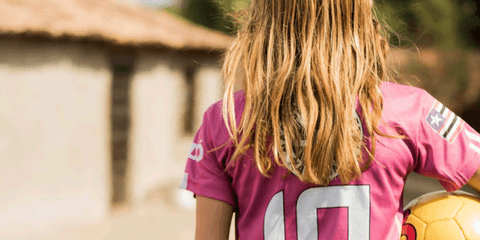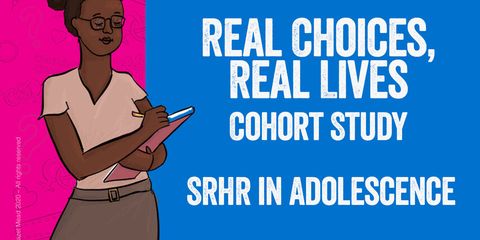Listening to girls as they grow up – our longitudinal study
A blog by Research Manager, Lilli Loveday.
4 August 2022Plan International is following the lives of 118 girls living in nine countries, across three continents, from their birth in 2006, until they turn 18 in 2024. Unlike other cohort studies, the Real Choices, Real Lives study’s longitudinal and qualitative data makes it uniquely placed to explore in detail the experiences of these girls and their families as they transition from childhood to adolescence in a gendered world.
The names used in this blog are pseudonyms.

We use the valuable evidence the study provides on girls’ realities to support our policy work and to inform our programming on both the global and national level. Our research brings girls’ voices to the fore, supporting available statistics, theories, and academic discussion on how social and gender norms impact girls’ lives over their life course.
Annual interviews with girls and their caregivers
Through annual interviews, the girls discuss their daily realities, attitudes, and aspirations for the future. The study provides insight into the way family and community shape girls’ expectations of what they can do, and be, right from the beginning.
“My life is going to be different from that of my mother because I have studied and reached where my mother did not reach…her life is not good.”
Nimisha, Uganda, 2017
Each year, the girls and their caregivers discuss what has changed and remained the same in different areas of the girls’ lives including: their time use, education, key relationships, health and sexual and reproductive health and rights (SRHR), wellbeing, freedoms, and safety.
“I think I would be happy if I became a [government] minister or teacher or another important member of the community…. I wouldn’t be happy if I married young or had to leave school early because then I would have to stay at home all the time and wouldn’t be able to work.”
Anti-Yara, Togo, 2021
Through storytelling activities, girls and caregivers have reflected on issues including child marriage and early unions, gender roles, the use of harsh punishment, and girls’ participation in community decision-making.
By interviewing girls’ caregivers about their own experiences of adolescence and adulthood we can also see how attitudes and behaviours have transferred or changed across generations.
“Boys and girls are equal now, unlike the old people…I was forbidden to go with any man, but now it is not like that… now children do not agree with that.”
Hoa’s mother, Vietnam, 2019
Key findings so far
Our analysis of the rich and varied data is ongoing, and more data collection will take place during the study’s final years. Some key insights the study has already provided:
- Girls growing up in different contexts share common experiences during childhood and early adolescence (10-14) including changing social expectations of their behaviour as they get older that are often dramatically different to expectations of their male peers. Caregiver concerns about girls’ safety, reputation, and future prospects strongly impact how girls are raised and the freedoms they have.
Read more in our regional reports for: Latin America, East and West Africa, and South East Asia
- There are clear differences in girls’ experiences based on their country context, however, girls living in the same contexts can also live different realities, due to the key role that family relationships play in shaping girls’ attitudes and opportunities during adolescence. Caregiver-adolescent dialogue is a key factor in girls’ experiences of SRHR and is heavily influenced by social norms.
Read more in: SRHR in adolescence
- Girls and their families in nearly all the cohort countries have experienced some level of food insecurity between 2020 and 2022, with the impacts of the COVID-19 pandemic, extreme weather, and global increases in food and fuel costs all contributing to hunger.
Read more in: World Hunger and its Impact on Girls
- Girls’ attitudes towards social norms and gendered expectations often shift over time. Some girls become more acceptant of restrictions placed on them, while others start to question, challenge or resist them.
Read more in: Girls Challenging the Gender Rules for Latin America and the Caribbean, South East Asia, and East and West Africa.
- All the cohort girls have challenged gender norms in at least one area of their lives. Girls’ resistance to inequality is not always visible, however, many girls find ways to negotiate restrictive gender norms in their daily lives.
Read more in the International Feminist Journal of Politics.
What’s next
Now the girls are in their mid-teens, the study will explore their experiences transitioning from early into late adolescence and how they feel about these changes, reflecting on the first 18 years of their lives and looking to the future as they enter adulthood.
Entering its final years, the study will also identify new ways findings from this unique dataset can be utilised, including learnings from the design and implementation of a longitudinal, qualitative study.
The cohort will be part of Plan International’s 2022 State of the World’s Girls report.


